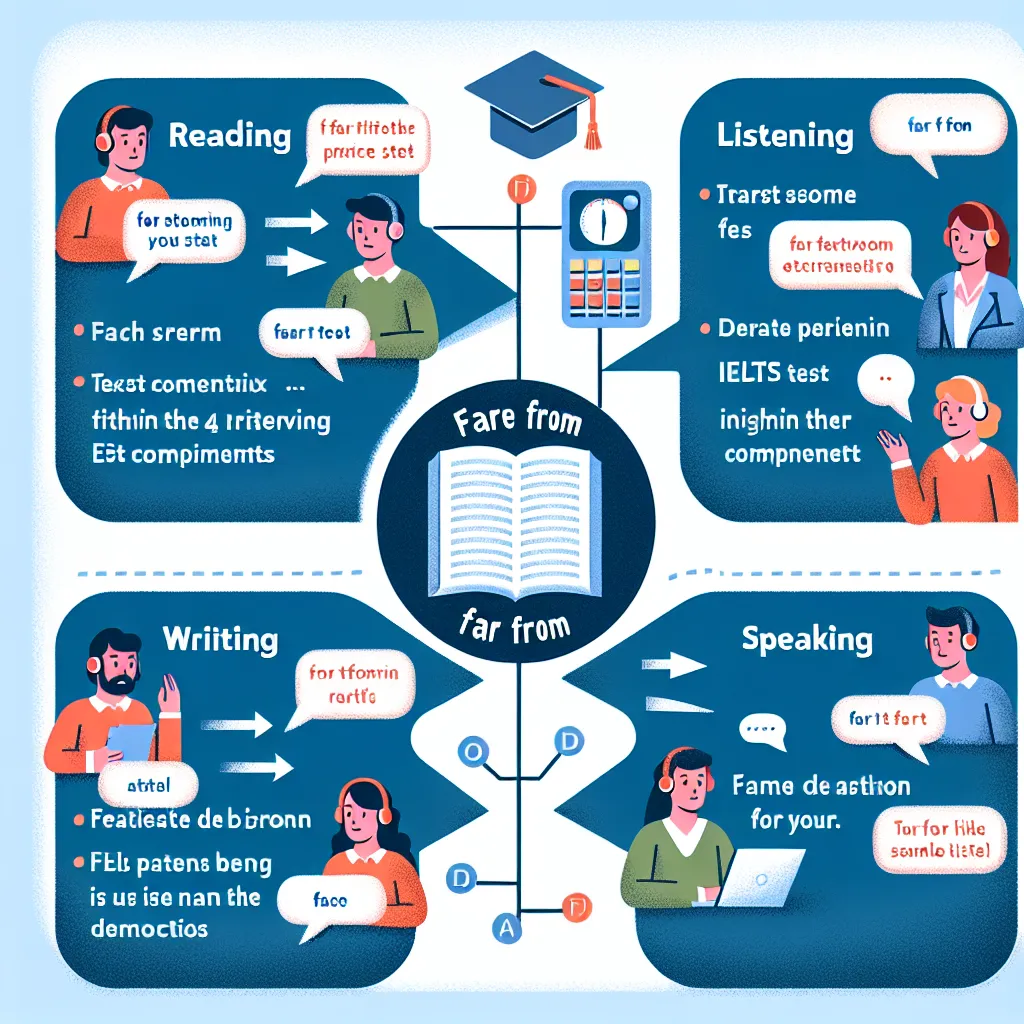The phrase “far from” is a versatile expression that frequently appears in IELTS exams. Understanding its usage can significantly enhance your language proficiency and boost your IELTS score. This article will delve into the intricacies of using “far from” in sentences, providing you with valuable insights and practical examples to excel in your IELTS journey.
Understanding the Meaning and Usage of “Far From”
“Far from” is an idiomatic expression that can be used in various contexts to express the opposite of what is being stated or to indicate that something is not close to a particular state or condition. In IELTS exams, this phrase often appears in reading passages and listening scripts, and its effective use can elevate your writing and speaking responses.
Here are some examples of how “far from” is used in different IELTS contexts:
- Reading: “The solution to the environmental crisis is far from simple.”
- Listening: “The professor’s explanation was far from clear, leaving many students confused.”
- Writing: “While progress has been made, gender equality in the workplace is still far from being achieved.”
- Speaking: “I’m far from fluent in French, but I can manage basic conversations.”
In each of these examples, “far from” is used to emphasize that something is not close to the stated condition or quality.

Grammar and Structure: How to Construct Sentences with “Far From”
To effectively use “far from” in your IELTS responses, it’s crucial to understand its grammatical structure. The basic formula is:
[Subject] + [be verb] + far from + [adjective/noun/verb-ing]
Let’s break down this structure with examples for each IELTS component:
Writing Task 2
-
“The current education system is far from perfect, requiring significant reforms to meet modern needs.”
(Subject: The current education system | be verb: is | far from | adjective: perfect) -
“Environmental protection is far from being a priority in many developing countries.”
(Subject: Environmental protection | be verb: is | far from | verb-ing: being)
Speaking Part 3
-
“The idea that technology solves all problems is far from the truth.”
(Subject: The idea | be verb: is | far from | noun phrase: the truth) -
“I am far from convinced that social media has a positive impact on society.”
(Subject: I | be verb: am | far from | past participle used as adjective: convinced)
Reading Comprehension
- “The author argues that the economic recovery is far from complete, citing persistent unemployment rates.”
(Subject: the economic recovery | be verb: is | far from | adjective: complete)
By mastering this structure, you can create sophisticated sentences that will impress IELTS examiners and effectively convey your ideas.
Advanced Usage: Elevating Your IELTS Responses
To achieve higher band scores in IELTS, it’s essential to use “far from” in more nuanced and complex ways. Here are some advanced techniques:
1. Combining with Other Structures
-
“Far from being a solution, the proposed policy may exacerbate the existing problems.”
(Using “far from being” at the beginning of a sentence adds emphasis) -
“The results of the study were not only far from conclusive but also raised more questions than answers.”
(Combining “far from” with “not only… but also” creates a more sophisticated structure)
2. Using in Concession Statements
- “While far from perfect, the new system represents a significant improvement over its predecessor.”
(Introducing a concession with “far from” adds nuance to your argument)
3. Incorporating Adverbs for Emphasis
- “The solution proposed by the government is still very far from addressing the root causes of the issue.”
(Adding adverbs like “still” and “very” intensifies the meaning)
4. In Comparative Structures
- “The actual situation is far from being as straightforward as it appears in the media.”
(Using “far from being as… as” in comparisons adds depth to your analysis)
Common Mistakes to Avoid
When using “far from” in your IELTS responses, be aware of these common errors:
-
Incorrect word order:
- Incorrect: “The solution is from far ideal.”
- Correct: “The solution is far from ideal.”
-
Using “to be” instead of “being” after “far from”:
- Incorrect: “The project is far from to be completed.”
- Correct: “The project is far from being completed.”
-
Omitting the verb “to be”:
- Incorrect: “The results far from satisfactory.”
- Correct: “The results are far from satisfactory.”
-
Using “far from” with incompatible adjectives:
- Incorrect: “The weather is far from hot.” (Use “nowhere near” instead)
- Correct: “The weather is nowhere near hot.”
-
Overusing “far from”:
- Avoid using “far from” multiple times in close proximity, as it can make your writing repetitive.
By avoiding these mistakes, you can ensure that your use of “far from” enhances rather than detracts from your IELTS performance.
Conclusion
Mastering the use of “far from” in sentences can significantly enhance your IELTS performance across all sections of the test. By understanding its meaning, structure, and advanced applications, you can create more sophisticated and nuanced responses. Remember to practice using “far from” in various contexts, and be mindful of common mistakes. With these skills, you’ll be well-equipped to tackle any IELTS question that comes your way, bringing you closer to achieving your desired band score.
To further improve your skills, try incorporating “far from” into your responses to practice IELTS questions on topics such as environmental issues, technological advancements, educational reforms, or social trends. This will help you become more comfortable with using the phrase in diverse contexts, ultimately enhancing your overall language proficiency.